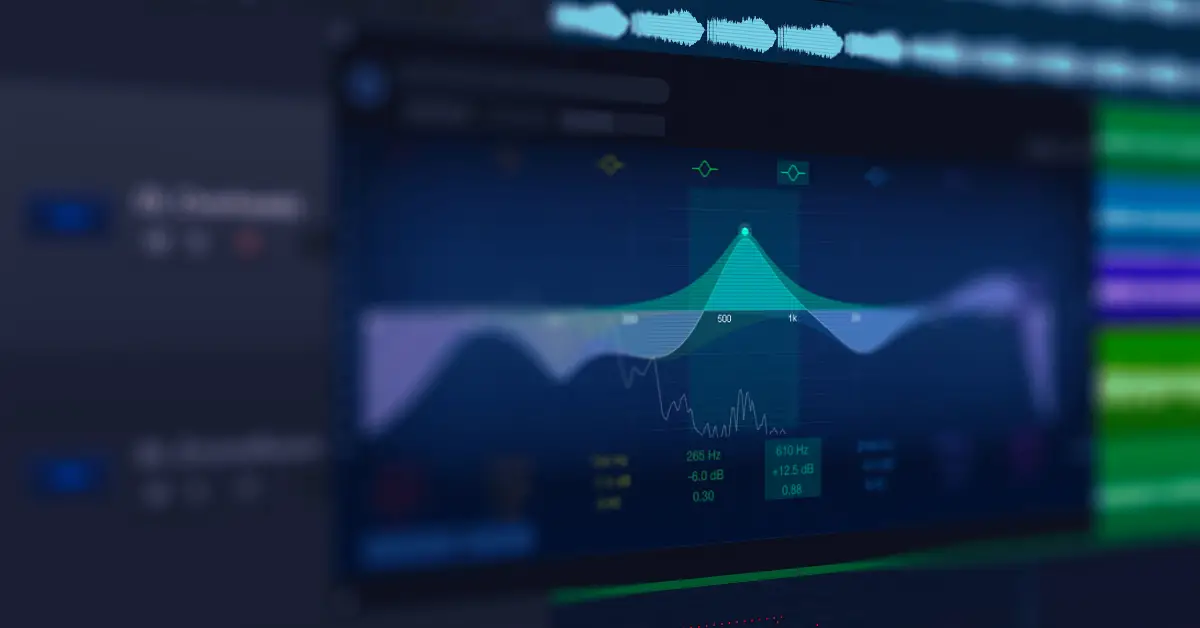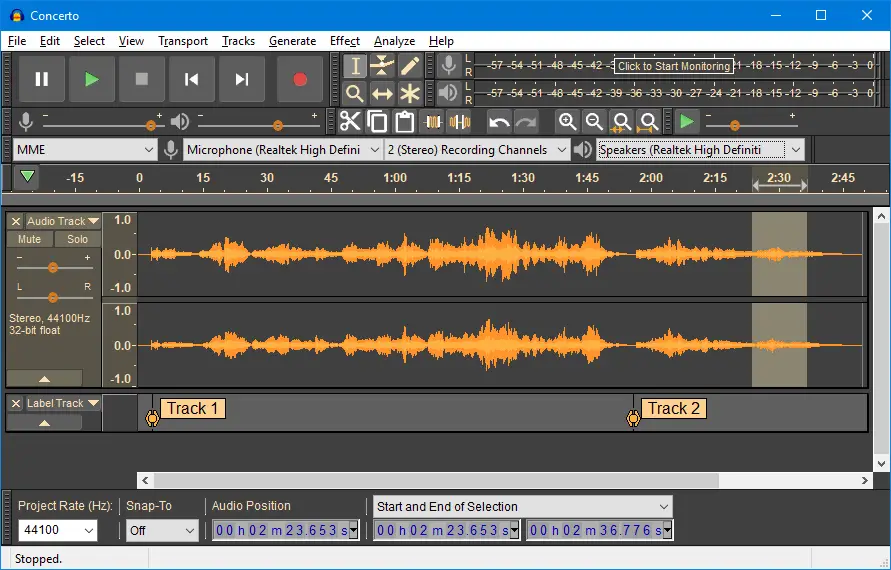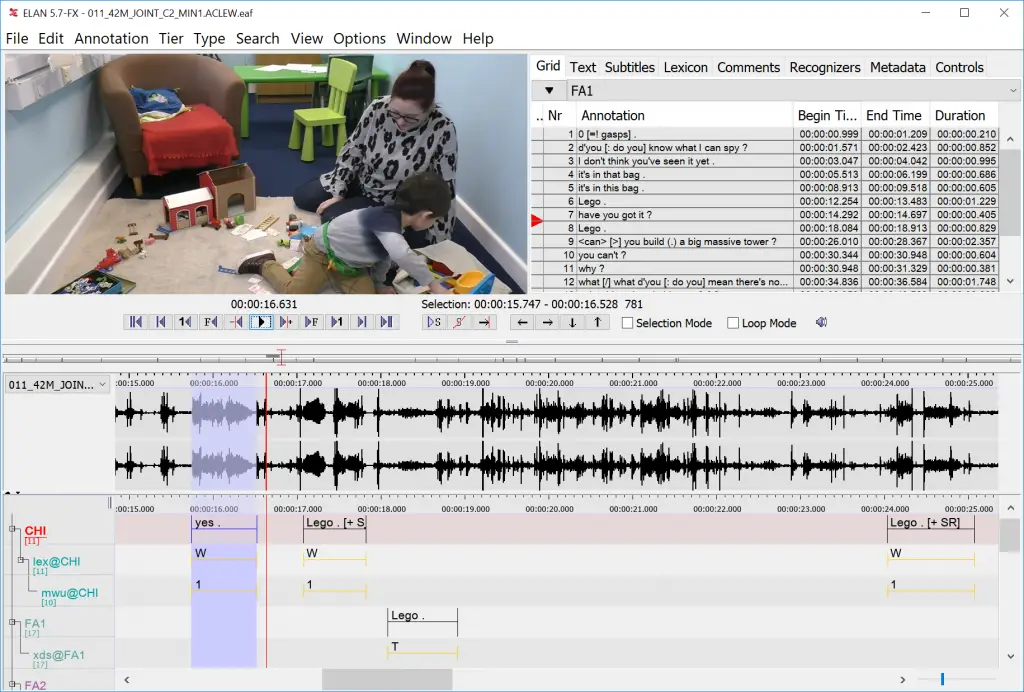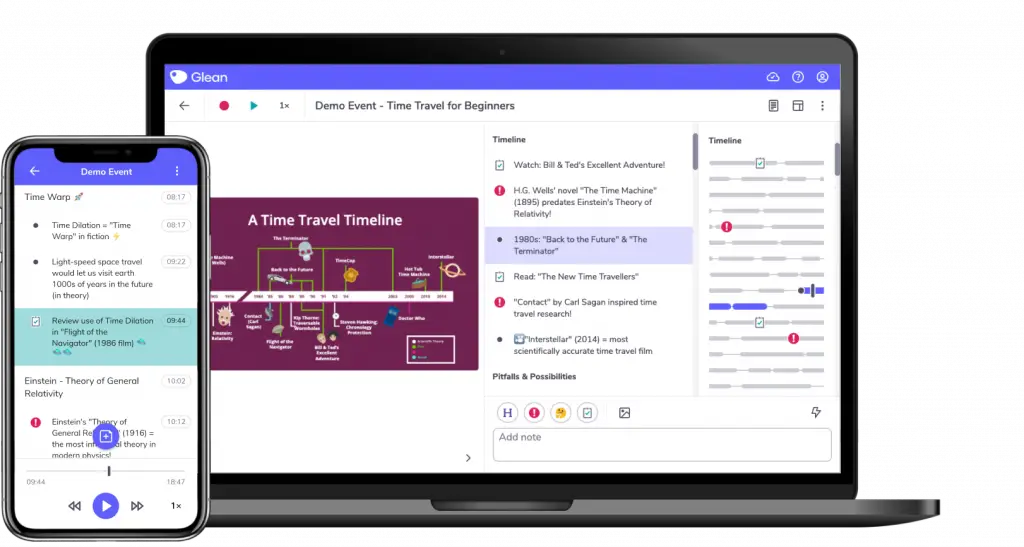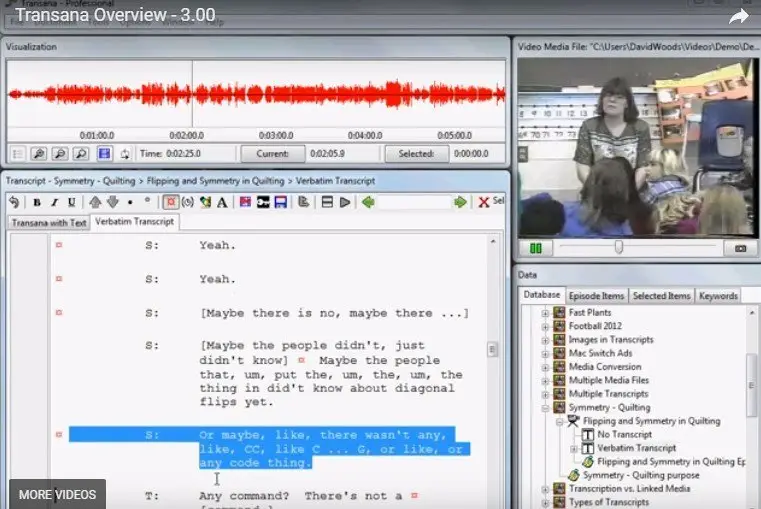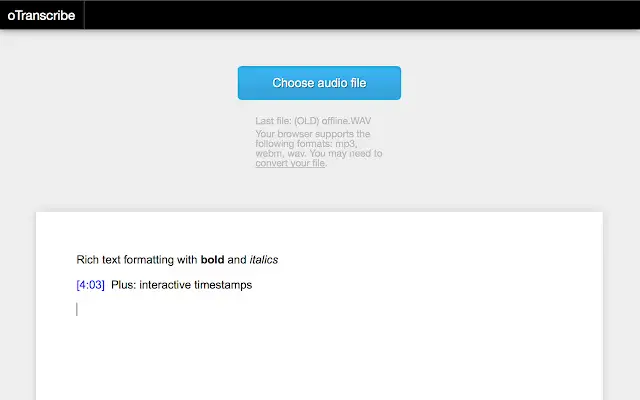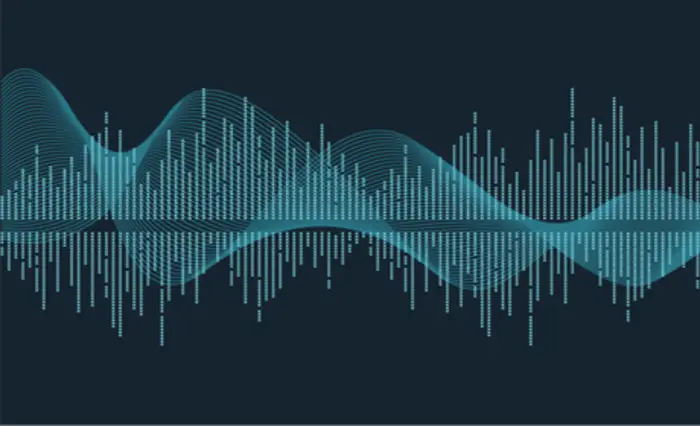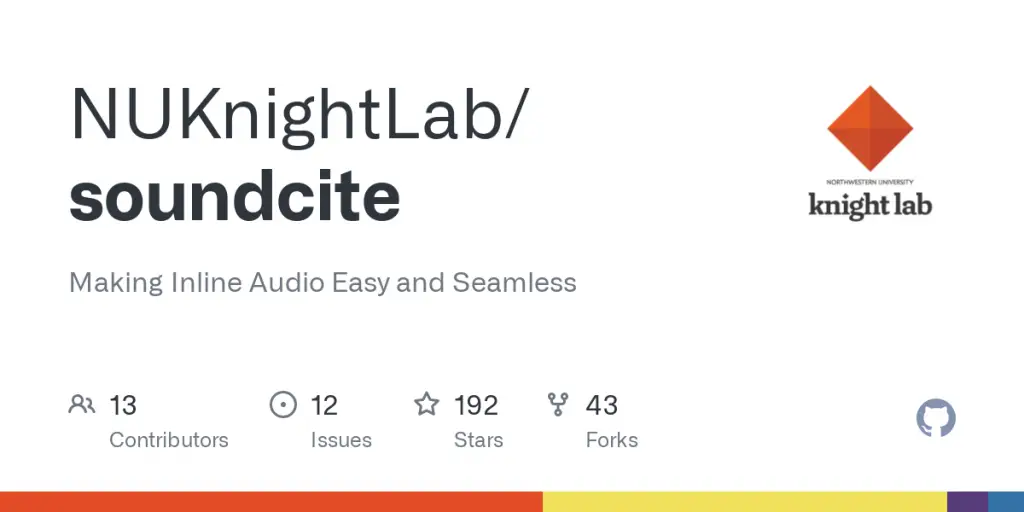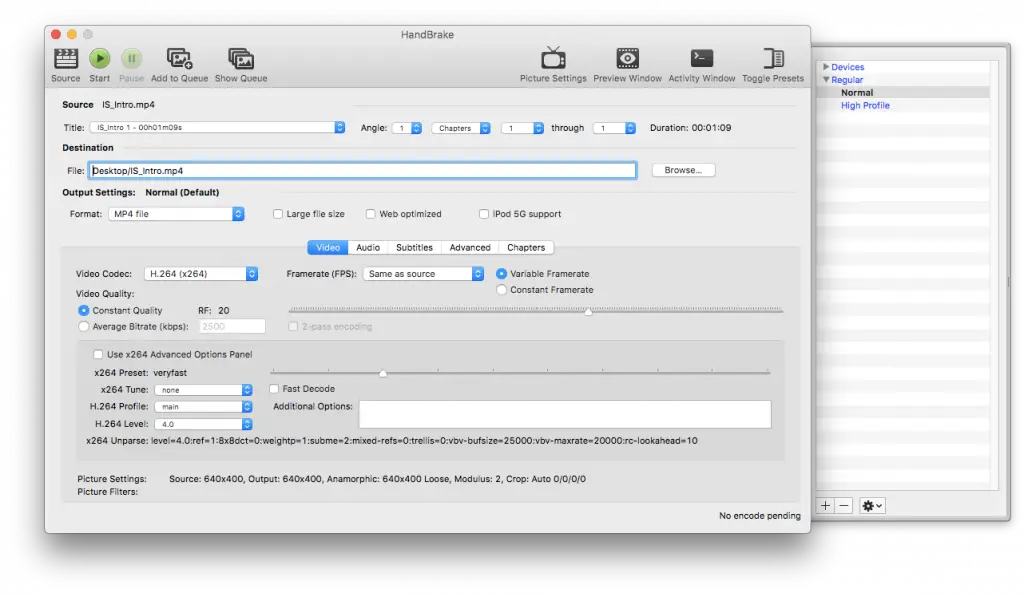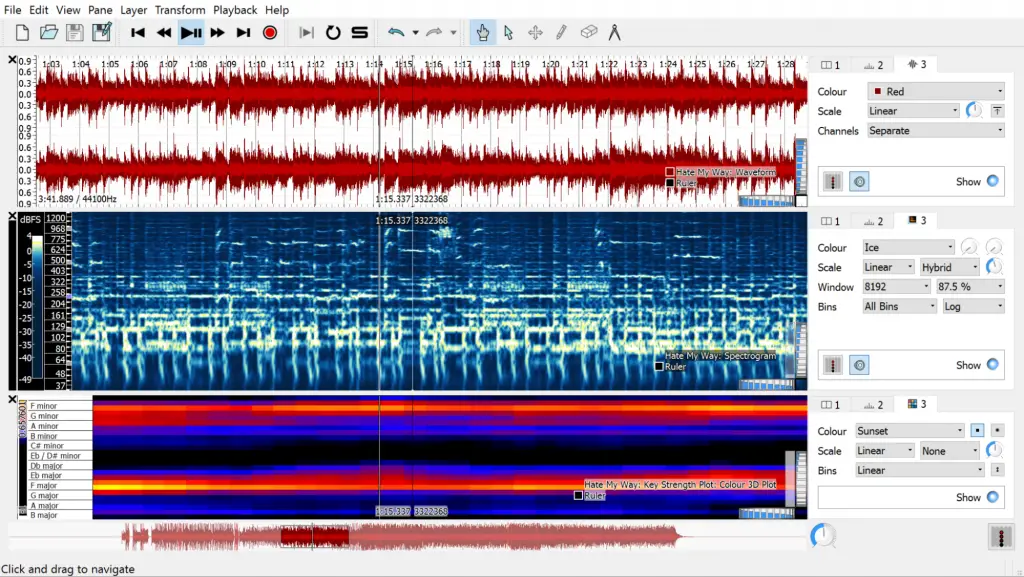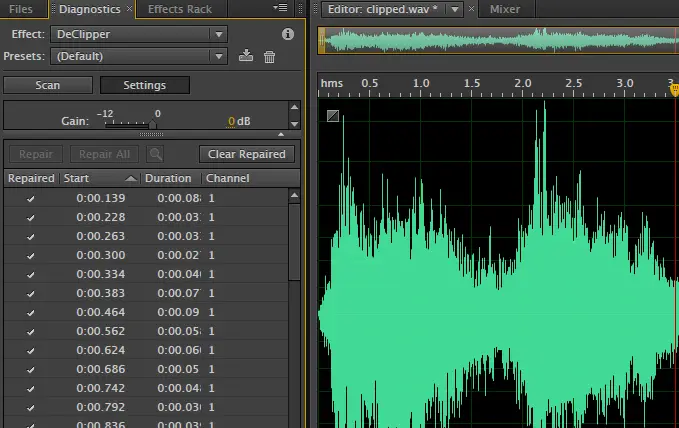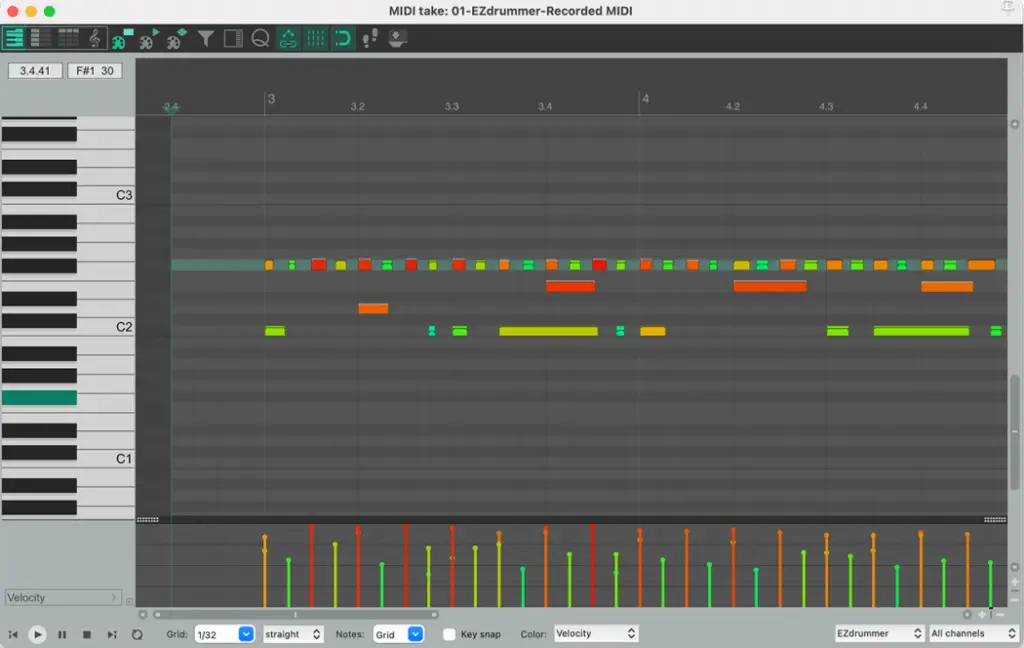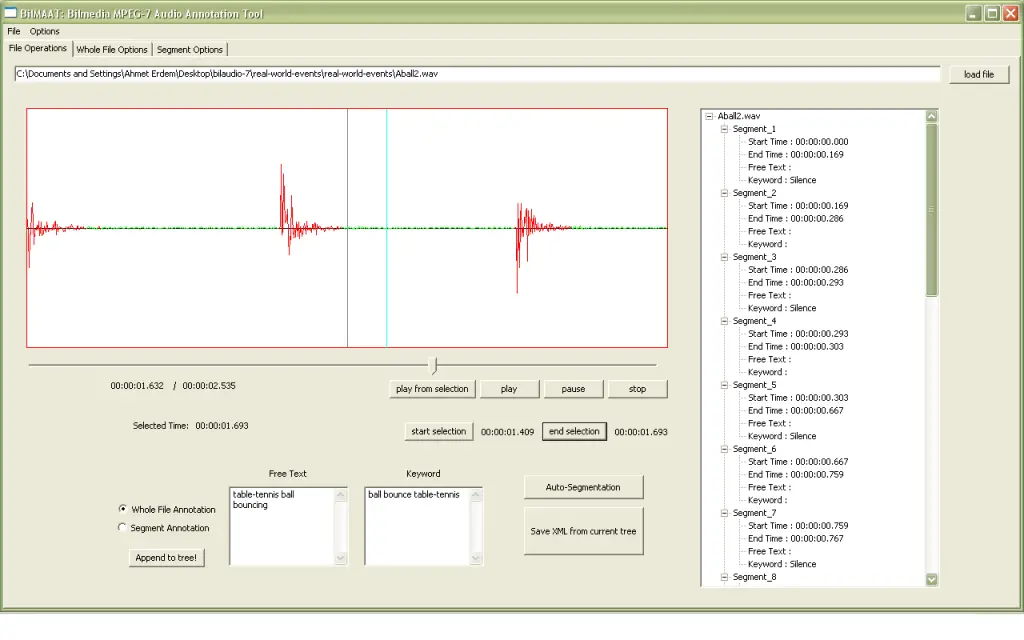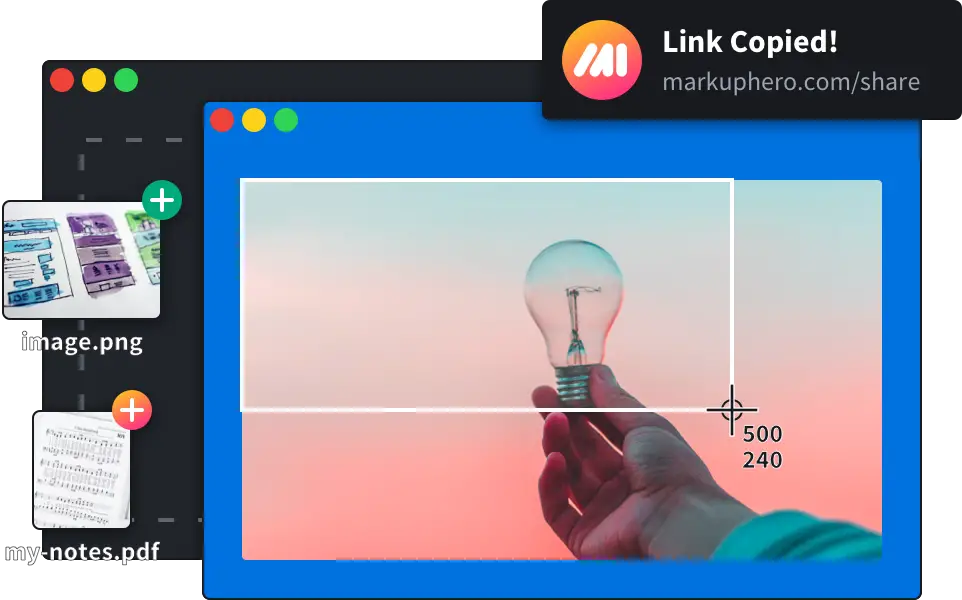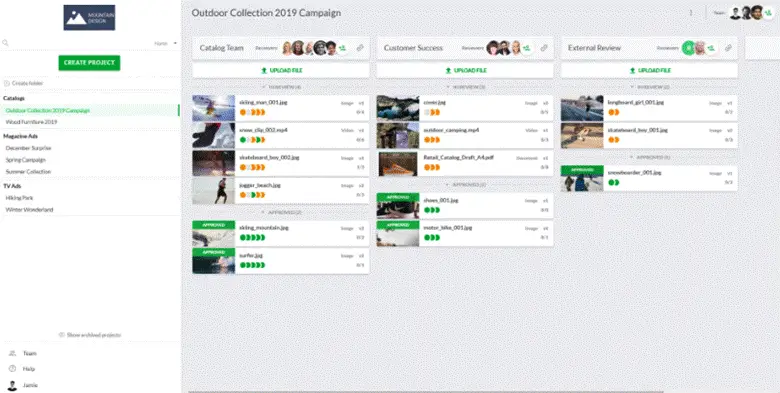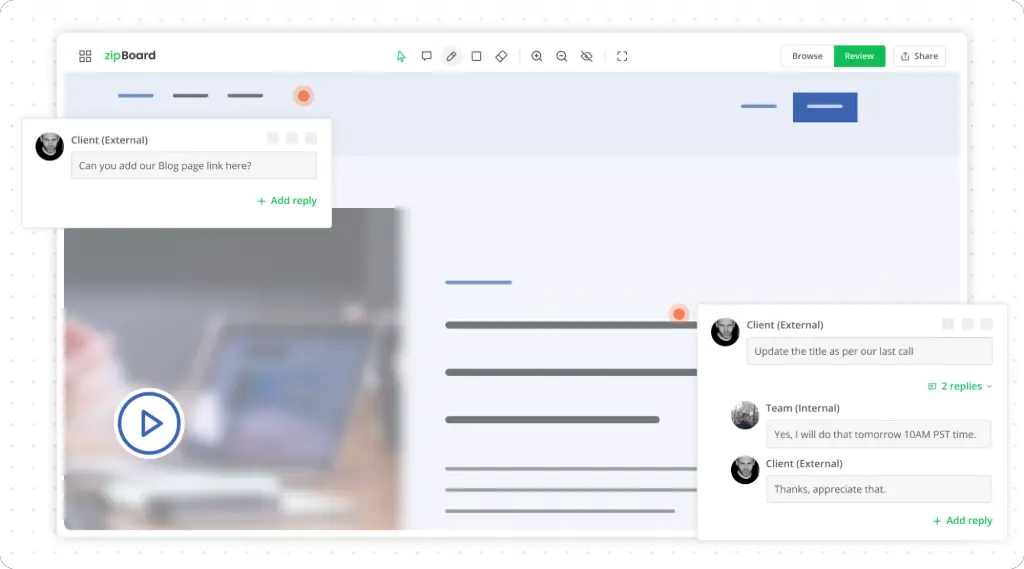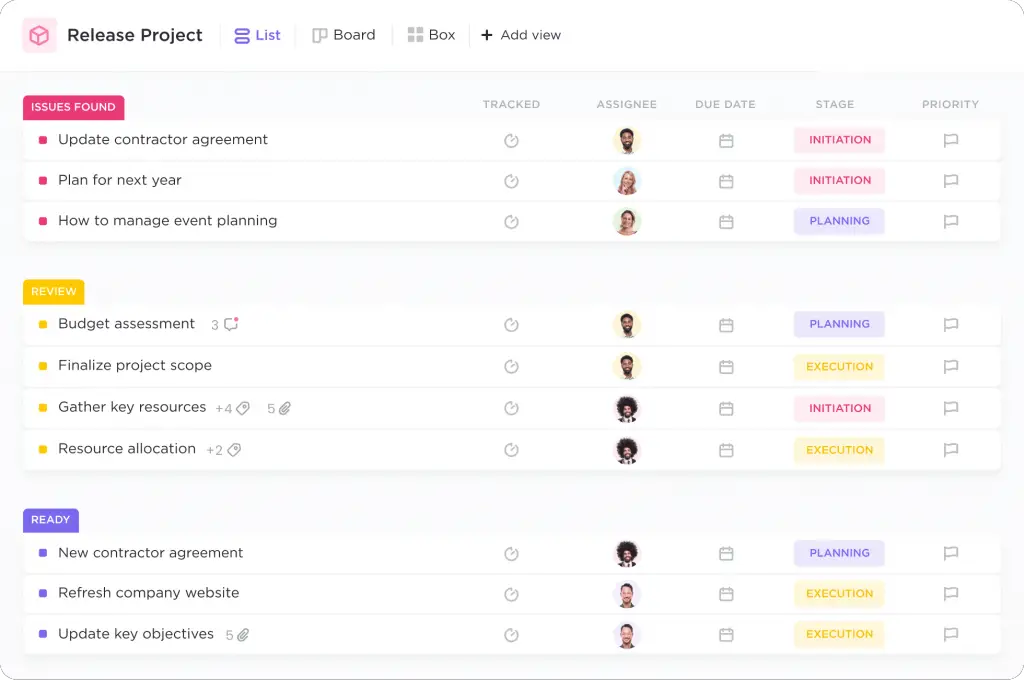Have you been struggling to find the perfect tool for marking important audio moments? Explore the 20 Best Tools for Audio Annotations in academic lectures.
Modern academic lectures? They’re awesome, like private concerts of knowledge. But also? They’re marathons, not sprints. As they stretch longer and dive into brain-twisting complexities, we’re all in the same boat: floating in a sea of information, trying to fish out the bits we’ll need later.
Picture this: no more rewinding and fast-forwarding like a DJ trying to find the right track. Audio annotation tools are your new study buddies. They help you mark, replay, and dissect the key moments from your lectures without breaking a sweat.
Table of Contents
Quick Peek
These tools are like magic glasses that make the vital parts of your lecture notes pop. They don’t just let you slap a sticky note on a time-stamp. They turn your lecture recordings into a vibrant, interactive map, making your study sessions feel less like a wild goose chase and more like a treasure hunt.
Ready to up your academic game? Today, we’re diving into the cream of the crop: the best tools for audio annotation in lectures, each with its own special flair crafted just for the scholar in you.
So buckle up, and let’s turn those hours of lecture recordings into a goldmine of insights, without the hassle!
Best Audio Annotation Tools
#1. Audacity: Best for basic audio editing and waveform visualization
Summary
- Open-source software
- Offers broad audio editing capabilities
- Displays audio in waveform
Meet Audacity — it’s not just another annotation tool, it’s like having a trusty sidekick in your academic adventures. Imagine a Swiss Army knife for audio, designed to slice and dice your files to perfection without driving you up the wall.
In the grand quest for crystal-clear understanding in academia, Audacity is the knight in shining armor. It’s there for the sleep-deprived student and the time-crunched researcher, turning the Herculean task of editing into a walk in the park.
No PhD required to navigate this ship; it’s straightforward and lets you focus on what really matters: the content.
Why is Audacity a Lifesaver?
- 🎯 Easy to Use: Its intuitive design means you won’t need a manual the size of your textbook. It’s user-friendly, with a quick learning curve that’s perfect for the ‘I-have-a-paper-due-tomorrow’ crowd.
- 🎧 Versatile Editing Tools: Need to snip and tuck your audio or slow it down to catch that light-speed lecture? Audacity has your back. It’s got the bells and whistles without being a beast to navigate.
- 🔌 Extensive Plugin Support: Whether you’re dissecting ancient poetry or crunching data in a research lab, this tool can morph to suit your niche, thanks to a ton of plugins.
Audacity isn’t just software; think of it as your trusty academic companion, a buddy with endless patience, helping you skim, refine, and highlight the most important parts of endless hours of audio. It doesn’t just make your life easier—it makes your work shine. 🌟
So, if your academic journey was a novel, Audacity is that character you’d root for — the trusty friend helping the hero unearth the secrets hidden in the sounds. 🎙
How much does it cost?
- Free
Source: https://www.audacityteam.org
#2. Praat: Best for phonetic analyses and annotations
Summary
- Specializes in phonetic analysis
- Allows for detailed annotations
- Popular among linguistics researchers
Praat, with its specialized capabilities, has carved a niche in the realm of phonetic analysis. Within academic circles, particularly in the discipline of linguistics, Praat’s software isn’t just a tool but a cornerstone.
It illuminates the intricacies of human speech, providing a deeper, more granular understanding, thus elevating the standards of speech and auditory studies.
What are the benefits of Praat?
- Detailed Phonetic Analysis: Breaks down speech nuances.
- Scripting Abilities: Automates repetitive tasks, improving efficiency.
- Visualization Options: Offers various plots and views for deep analysis.
In the meticulous world of phonetic research, accuracy and depth are paramount. Praat offers this precision, becoming an academic linchpin for those dedicated to understanding the complexities of speech.
Beyond just being an analytical tool, it’s a bridge between raw audio and meaningful data, providing scholars the ability to dissect, analyze, and ultimately expand their knowledge in the vast realm of linguistics.
How much does it cost?
- Free
Source: https://praat.en.softonic.com
#3. ELAN (Eudico Linguistic Annotator): Best for multi-layered time-aligned annotations
Summary
- Designed for linguistic annotations
- Multi-layered time-aligned system
- Offers interoperability with other tools
Picture ELAN as the Sherlock Holmes of linguistic tools – it’s got that sharp, discerning eye (or ear, in this case) that digs into the heart of spoken content like a detective on a mission. This isn’t your average annotator; it’s practically got a Ph.D. in making sense of complex dialogue and dialects.
Why is ELAN your go-to sidekick for linguistic deep-dives?
- 🎯 Complex Annotations: Imagine being able to peel back the layers of an audio clip like it’s an onion, diving deeper and deeper into each phrase, word, and inflection. That’s ELAN, giving you the tools to annotate with the precision of a surgeon.
- 🔗 Integration Abilities: ELAN plays well with others. Seriously, it’s the friendly neighbor of the research tool world, linking arms with your other tools and making your entire research process feel like a well-orchestrated dance.
- 👓 Flexible Viewing: Whether you’re a ‘spreadsheet’ or a ‘colorful chart’ kind of person, ELAN lets you set up your data in a way that makes sense to you. It’s like choosing the perfect pair of glasses that help you see your data in 20/20 clarity.
ELAN isn’t just another item in your toolkit; it’s the linguistic scholar’s dream machine. It’s like having a super-smart buddy right beside you, one who lives and breathes linguistics, guiding you through the densest, most tangled jungles of speech and language.
How much does it cost?
- Free
Source: https://archive.mpi.nl
#4. Sonocent Audio Notetaker: Best for visually organizing and color-coding audio notes.
Summary
- Provides a visual audio workspace
- Enables color-coding for audio segments
- Streamlines note organization
Sonocent Audio Notetaker introduces a new dimension to audio study with its visual approach.
By allowing users to color-code and structure audio segments, the tool helps academicians visualize, organize, and recall lecture information with unparalleled ease and efficiency.
What are the benefits of Sonocent Audio Notetaker?
- Visual Organization: Enables better memory retention and review.
- Color-coded Notes: Highlights crucial lecture segments.
- Integration with Other Software: Facilitates a smooth academic workflow.
For those looking to transform their auditory learning into a visual experience, Sonocent Audio Notetaker offers the perfect blend of organization and visual aid, enriching academic engagements.
How much does it cost?
- Starts at $156 per year
Source: https://sonocent.com
#5. Transana: Best for analyzing and visualizing qualitative research data
Summary
- Designed for qualitative data analysis
- Offers transcription and coding tools
- Provides multi-user collaboration features
Imagine Transana as the savvy, no-nonsense friend who sits you down with your pile of messy interview recordings and says, “Alright, let’s make sense of this chaos.”
This platform isn’t just software; it’s a masterful conductor, orchestrating your transcription and annotation efforts into a harmonious symphony of insight.
Why invite Transana to your next research party?
- 🎧 Synchronized Data View: Transana’s like having an extra set of eyes—while one’s following the transcript, the other’s tuned into the audio. It’s the ultimate multi-tasker, letting you play back audio and review data, all in one smooth move.
- 🤝 Collaborative Analysis: With Transana, teamwork doesn’t just make the dream work—it makes the research work. It’s like a virtual huddle room where you and your colleagues can put your heads together, no matter the distance.
- 🛠 Customizable Workspace: Everyone’s got their style, and Transana gets that. It’s the chameleon of research tools, adapting itself to fit your unique flow. Need your tools and data arranged just so? Transana says, “No problem.”
Transana isn’t just a tool; it’s your research wingman, holding the flashlight as you delve into the labyrinthine corridors of qualitative data. It’s your collaborative co-pilot, your organization guru, and your visualization virtuoso, all rolled into one sleek package.
For qualitative researchers who’ve faced the storm of disorganized data and lived to tell the tale, Transana isn’t just a nice-to-have; it’s a sanity-saver. It’s that golden ticket that turns “What on earth is happening in this data?” into “Ah-ha! Now I see it!” moments. 🧩🎶
How much does it cost?
- Starts at $50
Source: https://www.transana.com
#6. Wavesurfer: Best for phonetic visualization and transcription
Summary
- Focuses on phonetic visualization
- Offers automated transcription features
- Supports multiple file formats
Wavesurfer is a beacon for those navigating the intricacies of phonetic studies. Its capabilities extend beyond mere audio playback.
With advanced visualization and transcription tools, researchers can unveil the deeper layers of phonetic structures and nuances, promoting a more profound understanding.
What are the benefits of Wavesurfer?
- Detailed Spectrograms: Aid in phonetic examination.
- Automatic Transcription: Speeds up the research process.
- Extensible via Plugins: Expands tool capabilities as per research needs.
Phonetic research gains new momentum with Wavesurfer. By fusing visualization with precise transcription, the tool enhances the academic exploration of speech sounds and patterns.
How much does it cost?
- Free
Source: https://sourceforge.net
#7. Anvil: Best for multi-modal annotation involving video and audio
Summary
- Multi-modal annotation platform
- Integrates both audio and video
- Supports various annotation types
Think of Anvil as the Swiss Army knife of the research world, but way cooler. It’s like that friend who’s a movie buff and a podcast junkie all in one, making it a wizard at juggling both audio and video data.
Whether you’re diving into the rhythm of speech in a foreign language or decoding the body language of a political figure, Anvil is your go-to sidekick.
Why should Anvil be your partner in crime for multi-modal research?
- 🎧 Synchronized Annotations: Picture this – your video and audio data, dancing in perfect harmony, like a meticulously choreographed ballet. That’s Anvil’s synchronized annotation magic at work, making your multimedia study not just easier, but downright enjoyable.
- 🕰 Flexible Timeline: Need to zoom in on a half-second of a stutter or span out to analyze an hour-long dialogue? Anvil’s timeline is your playground, ready to twist and turn according to your whims and needs.
- 💼 Export Features: Got some groundbreaking insights that the world needs to see? Anvil’s got your back, packing up your findings into neat, shareable packages ready for the academic limelight.
As multi-modal research grows from a niche passion into a full-blown academic movement, Anvil isn’t just riding the wave—it’s steering the ship. It’s not just about making your life easier (though it does that in spades); it’s about deepening your understanding of complex, multi-sensory data.
In a world where research isn’t just about what we hear or see, but the rich tapestry of human expression that blends the two, Anvil isn’t just a tool—it’s a visionary companion, helping you see the vibrant stories that lie in the intersection of sound and sight. 🎥🎵
How much does it cost?
- Free
Source: https://www.anvilstudio.com
#8. OTranscribe: Best for manual transcription of audio files
Summary
- Focused on manual transcription
- Integrates playback controls
- Supports keyboard shortcuts
OTranscribe takes manual transcription to new heights by ensuring a hassle-free experience for academicians.
Its integration of audio playback with transcription facilities allows for efficient content documentation, making the daunting task of manual transcription smoother and more intuitive.
What are the benefits of oTranscribe?
- Integrated Playback: Streamlines the transcription process.
- Keyboard Shortcuts: Increases transcription speed.
- Export Options: Facilitates data sharing across platforms.
For those valuing precision and detail in transcriptions, OTranscribe proves indispensable. It refines the art of manual transcription, offering an enhanced academic toolset for documentation.
How much does it cost?
- Free
Source: https://otranscribe.com
#9. TapeWrite: Best for annotating podcasts and audio files with text notes
Summary
- Tailored for podcast annotations
- Enables text-based notes
- Streamlined playback options
TapeWrite, designed specifically for podcast enthusiasts and creators, offers an innovative approach to annotate audio files with text notes.
Ideal for academic pursuits involving podcasts or lengthy audio segments, it streamlines the annotation process, ensuring focused and efficient content absorption.
What are the benefits of TapeWrite?
- Segmented Annotations: Allows for specific topic annotations.
- Interactive Playback: Enhances engagement with content.
- Shareable Notes: Facilitates collaborative academic studies.
In a world where podcasts have become academic resources, TapeWrite stands out, bridging the gap between extensive audio content and concise textual annotations, ensuring a holistic academic experience.
How much does it cost?
- Not provided
Source: https://www.journalism.co.uk
#10. Soundcite: Best for embedding short audio clips into written content
Summary
- Embeds audio within text
- User-friendly interface
- Ideal for multimedia content creation
Picture Soundcite as the maestro of your academic orchestra, skillfully blending the eloquence of your words with the emotional resonance of sound.
It’s like having a personal composer for your papers and presentations, one who knows just when the violins should soar or when the drums should roll to punctuate your point. This isn’t just a tech tool; it’s storytelling evolved.
Why should Soundcite be your next secret weapon?
- 📖 Seamless Integration: Imagine reading about a pivotal political speech and being able to hear that speaker’s passion, right there in the text. That’s Soundcite, turning your readers into listeners and your papers into performances.
- 🎛 Customizable Playbacks: Whether it’s a subtle background murmur or a striking soundbite that you want to hit just right, Soundcite lets you be the director of your own audio narrative. It’s as meticulous or as broad as you need it to be.
- 🚀 Engaging Presentations: Think of it as the difference between a monochrome sketch and a vibrant painting. With Soundcite, your academic work doesn’t just inform; it captivates, turning your presentations into unforgettable experiences.
In an age where academia isn’t just embracing multimedia but giving it a bear hug, Soundcite is more than a tool—it’s a game-changer. It doesn’t just help you tell your story; it empowers you to perform it, orchestrating a symphony where words and sounds play together in perfect harmony.
With Soundcite, you’re not just writing a paper or crafting a presentation—you’re conducting a masterpiece that dances and resonates, inviting your audience not just to read, but to listen and feel your work in a whole new dimension. 🎼📚
How much does it cost?
- Free
Source: https://soundcite.knightlab.com
#11. InqScribe: Best for detailed transcription and subtitling
Summary
- Specializes in transcription and subtitling
- Offers timecode support
- Enables export in various formats
Catering primarily to transcriptionists and subtitlers, InqScribe delivers detailed and precise content documentation.
Whether it’s for academic film studies or lecture transcriptions, this tool simplifies the process, allowing for accuracy in synchronizing text with audio and video content.
What are the benefits of InqScribe?
- Timecode Integration: Ensures precise content synchronization.
- Flexible Export Options: Adapts to various academic needs.
- Customizable Interface: Provides an optimized transcription environment.
InqScribe stands as a testament to the fusion of accuracy and ease in transcription and subtitling. For academicians requiring pinpoint synchronization, it remains an essential tool in their arsenal.
How much does it cost?
- $99
Source: https://www.inqscribe.com
#12. WaveNet: Best for deep learning-based audio analyses
Summary
- Utilizes deep learning for analysis
- Advanced audio processing
- Suited for complex academic research
WaveNet steps into the future of audio analysis with its deep learning-driven approach.
Tailored for researchers who seek advanced insights from audio data, it harnesses the power of neural networks to delve deeper into sound patterns, offering unparalleled depth and accuracy.
What are the benefits of WaveNet?
- Cutting-edge Analysis: Uses deep learning for detailed insights.
- Versatile Applications: Suitable for various academic disciplines.
- High Accuracy Rates: Ensures reliable results in research.
In the evolving landscape of academic research, WaveNet stands tall, showcasing the potential of deep learning in audio analysis. Its advanced methodologies redefine what’s possible in audio-driven academic pursuits.
How much does it cost?
- Free version available
- Premium starts at $4
Source: https://speechify.com
#13. Sonic Visualiser: Best for viewing and analyzing the contents of music audio files
Summary
- Designed for music analysis
- Offers multiple visualization tools
- Integrates various plugins
Sonic Visualiser caters specifically to the niche of music analysis, providing a gamut of tools to dissect and understand music audio files.
Ideal for musicologists and students, it transforms complex audio files into visual representations, illuminating the intricacies of musical compositions.
What are the benefits of Sonic Visualiser?
- Spectrogram Views: Aids in frequency analysis.
- Plugin Support: Expands its analytical capabilities.
- Layered Annotations: Offers depth in music examination.
Sonic Visualiser becomes an essential tool for those diving into the vast ocean of music analysis, offering visual insights into the depths of musical structures and patterns.
How much does it cost?
- Free
Source: https://www.sonicvisualiser.org
#14. Adobe Audition: Best for professional audio editing and multi-track mixing
Summary
- Professional audio editing software
- Offers multi-track capabilities
- Comprehensive toolset
Adobe Audition, a stalwart in the professional audio editing arena, brings its powerhouse capabilities to the academic sphere.
From intricate edits to complex multi-track projects, its vast toolset caters to academic tasks that require the highest level of audio precision and sophistication.
What are the benefits of Adobe Audition?
- Advanced Editing Tools: Ensures professional-level refinements.
- Seamless Integration: Works well with other Adobe products.
- Noise Reduction Capabilities: Enhances audio clarity for lectures and presentations.
When academia demands professional audio finesse, Adobe Audition delivers. Its sophisticated features and integrations render it an irreplaceable asset for detailed academic audio projects.
How much does it cost?
- $29.99 per month
Source: https://www.adobe.com
#15. Reaper: Best for detailed audio editing and production
Summary
- Offers deep audio editing tools
- Customizable interface
- Supports a range of plugins
Reaper, revered in audio production circles, provides a platform that’s both comprehensive and customizable.
Tailored for those in academia seeking detailed audio editing and production capabilities, Reaper offers a dynamic environment, ensuring audio tasks are executed with precision and creativity.
What are the benefits of Reaper?
- Flexible Workspace: Adapts to user preferences.
- Extensive Plugin Support: Broadens the scope of audio manipulation.
- Cost-effective: Offers professional tools without a hefty price tag.
Reaper epitomizes the fusion of power and flexibility in the realm of audio editing. For academic projects demanding intricacy and depth, it remains a top contender.
How much does it cost?
- $60
Source: https://www.reaper.fm
#16. MPEG-7 Audio Annotator: Best for advanced audio descriptors
Summary
- Harnesses MPEG-7 audio standards
- Provides advanced audio descriptors
- Suitable for intricate audio metadata tasks
The MPEG-7 Audio Annotator taps into the MPEG-7 audio standards, offering a specialized tool for crafting advanced audio descriptors.
Academicians requiring a deep dive into audio metadata for their research and studies find this tool indispensable, as it unravels layers of audio details with precision.
What are the benefits of MPEG-7 Audio Annotator?
- Highly Detailed Descriptors: Enables nuanced audio analyses.
- Standardized Annotations: Ensures compatibility and consistency.
- Intuitive Interface: Streamlines the annotation process.
For projects requiring standardized yet intricate audio descriptors, the MPEG-7 Audio Annotator emerges as the go-to tool. Its capabilities bolster academic research by providing precise audio metadata insights.
How much does it cost?
- Not provided
Source: http://www.cs.bilkent.edu.tr
#17. Markup Hero: Best for quick markup of lecture visuals and slides
Summary
- Focused on visual lecture content
- Quick annotation tools
- Streamlines academic presentations
Markup Hero takes center stage when the task is to swiftly annotate lecture visuals and slides.
It provides academicians and students an effortless way to highlight, comment on, and organize visual lecture materials, enhancing comprehension and collaboration.
What are the benefits of Markup Hero?
- Rapid Annotations: Speeds up lecture preparations.
- Collaboration Features: Facilitates team-based academic projects.
- Versatile Markup Tools: Adapts to various content types.
With visual materials becoming a mainstay in academia, Markup Hero’s intuitive and efficient annotation capabilities ensure lectures remain engaging, interactive, and comprehensible.
How much does it cost?
- $4 per month
Source: https://markuphero.com
#18. Filestage: Best for feedback on lecture audio content
Summary
- Centralized feedback platform
- Synchronizes team-based reviews
- Streamlines lecture refinements
Filestage steps up as a centralized hub for garnering feedback on lecture audio content.
Ideal for academic teams working on courses or lecture series, it synchronizes critiques, suggestions, and edits, ensuring the final lecture output resonates with clarity and impact.
What are the benefits of Filestage?
- Real-time Feedback Loop: Speeds up the review process.
- Collaborative Annotations: Enhances collective input.
- Version Control: Tracks edits and iterations efficiently.
Filestage shines in fostering collaboration and refinement. As academia emphasizes collective input, this tool ensures lectures evolve with precision, drawing from diverse feedback sources.
How much does it cost?
- $49
Source: https://filestage.io
#19. zipBoard: Best for reviewing and annotating eLearning lectures
Summary
- Tailored for eLearning content
- Comprehensive review tools
- Supports multimedia lecture formats
zipBoard champions the review and annotation of eLearning lectures, addressing the unique demands of digital academic platforms.
As eLearning burgeons, educators and students alike benefit from its comprehensive tools, refining online courses to achieve peak engagement and understanding.
What are the benefits of zipBoard?
- Holistic Reviews: Covers all eLearning material aspects.
- Interactive Annotations: Boosts engagement with content.
- Collaborative Features: Facilitates team-based course refinement.
In the rapidly expanding realm of eLearning, zipBoard stands out as a beacon, ensuring online lectures not only inform but also captivate, thanks to its in-depth review and annotation capabilities.
How much does it cost?
- $39-$79
Source: https://zipboard.co
#20. ClickUp: Best for organizing lecture annotations and tasks
Summary
- Task and annotation organizer
- Integrates with various platforms
- Enhances academic project management
ClickUp, while renowned as a project management tool, also excels in organizing lecture annotations and tasks.
Its versatility means academicians can seamlessly juggle research projects, lecture preparations, and student interactions, ensuring every academic endeavor progresses smoothly.
What are the benefits of ClickUp?
- Unified Workspace: Centralizes academic tasks and annotations.
- Integration Capabilities: Connects with a multitude of academic tools.
- Customizable Views: Adapts to individual academic needs.
As academia becomes more multifaceted, ClickUp provides the structure and organization required to navigate complex projects and lectures. It’s a unified platform that’s indispensable for modern academic endeavors.
How much does it cost?
- Starts at $5 per month
Source: https://clickup.com
Conclusion
In our data-driven academic landscape, the right annotation tool can dramatically enhance understanding and collaboration.
By pinpointing tools with the most beneficial key features, educators and students can annotate images, PDF documents, and even entire web pages with precision.
Online annotation tools, equipped with features like text annotation for Google Docs, unlimited project templates, and visual bug tracking, simplify project management and refine machine learning models.

